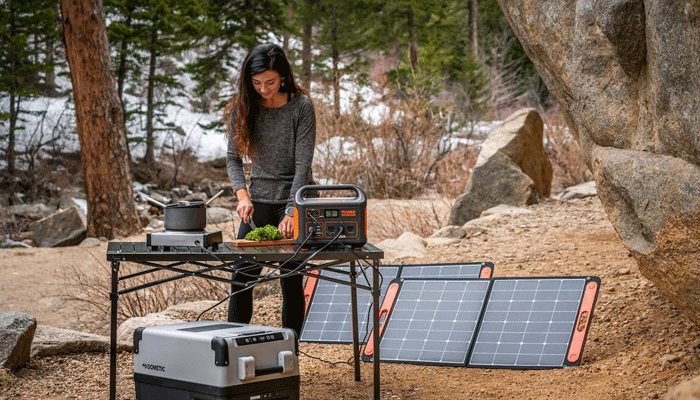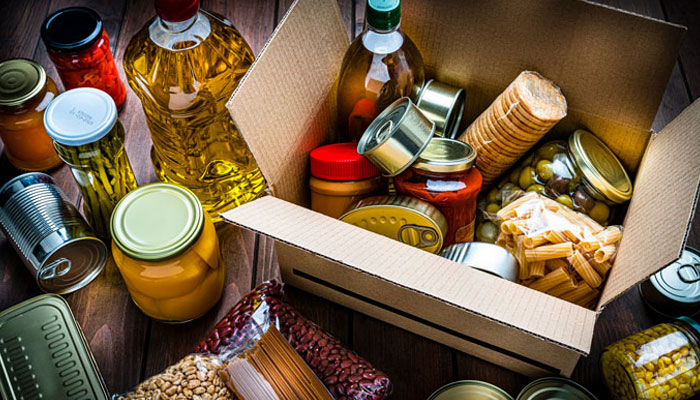
It’s recommended to stockpile an emergency supply that can last up to two weeks. This includes foods that are nutrient-dense and delicious. Jerky is an excellent source of protein and can last for multiple years if stored properly.
Choose kits with varied food options, including those that can be eaten on their own or rehydrated in boiling water. Also, consider gluten-free options to cater to diverse dietary needs.
Canned Foods
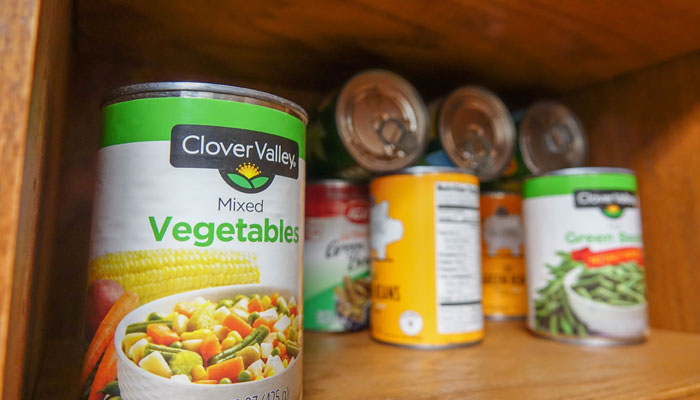
Canned foods are an important part of any emergency food supply because they can provide your family with a significant number of calories and nutrients if you need to survive without access to other sources of non-perishable food. They also tend to have a longer shelf life than other types of foods, especially when they are stored in an optimal environment.
The best way to begin stockpiling canned foods is to first figure out what your family eats regularly and then decide how much of that you can store away at any given time. This will help you develop a plan for how long your family can survive in the event of an emergency or natural disaster. It will also help you to decide what foods are most important to store, as well as which items you may not need to keep in such a crisis.
Most people will find that they need a minimum of a two-week supply of essential foods in the event of an emergency or natural disaster. This can be achieved through careful planning and simply increasing the amount of staple foods your family eats on a regular daily basis. This is a reasonable goal for most families to achieve and many will already have this amount of food on hand if they do the proper planning.
When deciding what to store, it is important to consider the calorie density of each food. You will want to make sure that you are storing foods that are high in carbohydrates, fats, and proteins. This will ensure that your family can get all the essential nutrients they need in the event of an emergency or natural catastrophe.
Some of the best types of canned foods to store are soups, stews, chili, vegetables, and fruits. These types of foods are easy to prepare and can provide a good source of calories in the event of an emergency or natural event. It is also a good idea to store some dried foods, such as rice, pasta, cereals, and jerky in addition to your canned foods to provide more variety.
Dried Foods

In days gone by, the bulk of a family’s emergency food supply was shelf-stable dry foods. These included staples such as flour, rice, sugar, and beans that could be stored year-round in a pantry. This is an easy and economical way to increase your family’s emergency preparedness. However, many people may not have the cooking or storing skills to make these foods in an emergency, so they may want to consider alternatives that are easier to prepare.
One option is to purchase freeze-dried foods, which have been cooked and then frozen before being rehydrated in water or another liquid. This process removes the moisture, and the food is then packaged in airtight plastic bags to prevent spoilage. These foods are also lightweight and compact, making them easy to store and transport if you must leave your home during an emergency.
Another option is to purchase ready-to-eat canned foods, which contain ingredients that have been cooked and then canned with a seal for added protection. These can be eaten straight out of the can or warmed if you prefer. They are typically inexpensive and can be purchased in large quantities to create a full meal for the entire family.
When selecting emergency foods, keep in mind the specific type of disaster or crisis you are preparing for. For example, if you live in an area that is prone to tornadoes or hurricanes, it’s wise to include items such as peanut butter, granola bars, and water. These are simple to prepare and can provide you with vital nutrition until help arrives or you can return to your home.
For a more extensive collection of emergency foods, consider purchasing food kits. These can contain a variety of entrees, side dishes, snacks, and beverages. You should also look for options that are suitable for infants or anyone with dietary restrictions or allergies. You can even find options that are portable if you are concerned about your ability to cook in an emergency, such as meal kits that only require hot water. Then, you can have peace of mind knowing that your family will be well-fed no matter what happens, and keep an eye out for deals like the Valley Food Storage Coupon to save on your emergency food supplies.
Canned Meats
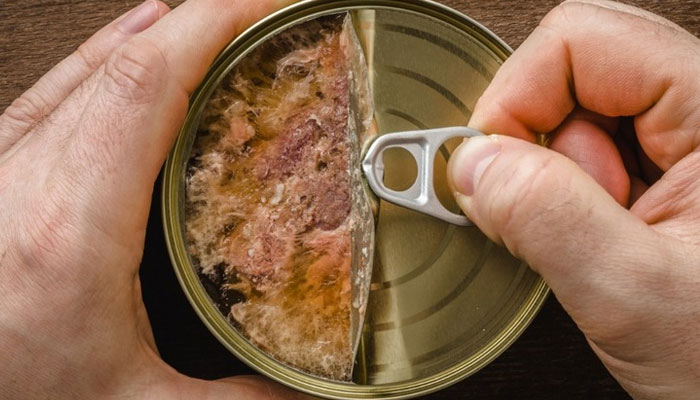
Canned meats are an important component of any emergency food supply. They have a long shelf life, meaning they can be stored for months without refrigeration. They are also a convenient source of protein in the event of an emergency, such as when a power outage or other natural disaster disrupts food supplies. You can find a variety of long-lasting canned meats at grocery stores, including tuna, salmon, sardines, and freeze-dried chicken.
The canned foods you choose should be low in salt and fat to help reduce your chances of becoming dehydrated during a crisis. Additionally, be sure to include some canned fruits and vegetables in your survival food stockpile to add a little color and nutrients to your diet.
Some canned foods are high in sodium, so you will want to avoid relying solely on them for all of your meals. However, some canned foods contain a balanced amount of sodium to provide you with the nutrients you need to survive a crisis. Some canned soups and stews are good examples of this, such as our Three Sisters Stew.
Many people don’t consider canned meats when creating their emergency food supply, but they are a great option for those who don’t have access to fresh meat or have limited cooking skills in the event of an emergency. They can be eaten straight from the can or warmed if desired.
Other canned meat options that are high in protein and can be enjoyed with minimal preparation are dehydrated meats, such as jerky or dry-cured salami, which can last a long time when sealed properly. You can buy a wide range of these at grocery stores or at specialty shops that sell dehydrated foods, such as Trader Joe’s.
Adding an emergency food stash to your pantry is an easy way to prepare for a crisis. By setting aside a designated shelf for canned foods and rotating your emergency supplies, you can keep a small stockpile of food on hand in case a disaster strikes. You can even start building your disaster supply by buying a few extra cans of food each time you go shopping.
Dehydrated Fruits
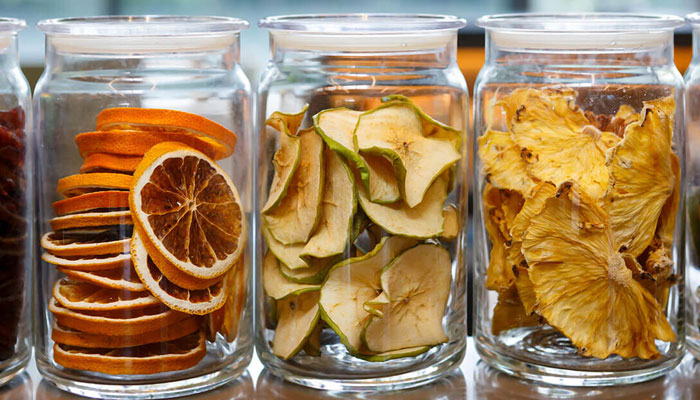
Dehydrated fruits are a quick snack and can also be used to add fruit flavor to emergency meals. They also provide a source of fiber, which can help with digestive health. They are relatively inexpensive to make yourself, and you can store them for up to a year when they are properly stored.
The best types of fruit to dry include berries, apples, bananas, mangoes, and pineapples. Some of them can be eaten as is, while others need to be rehydrated or ground into a powder. Fruits with tough skins should be “cracked” before drying to allow the inside moisture to evaporate. The best way to crack skins is by quickly dipping them in boiling water for 30 to 60 seconds.
While canned foods are a staple, they do have their limitations. It is possible to run out of these items if the supply chain and deliveries are disrupted, as was the case during the recent “Beast from the East” snowstorms when supermarket shelves were empty for days. That’s why it is important to create a long-term food plan that includes dehydrated foods.
It’s also a good idea to stockpile a couple of weeks worth of emergency supplies. While this is a shorter time frame than the three-day supply suggested by the Centers for Disease Control and Prevention, it’s still enough to help you get through a few days or more without being able to go shopping.
When it comes to vegetables, dehydrated options are a great choice because they last longer than canned products. They’re also much lighter and take up less space, which makes them easier to store in your home. Vegetables that can be easily dehydrated at home include corn, sweet peppers, and tomatoes.
If you decide to purchase dehydrated foods, it’s important to choose the right storage location and keep your supplies in a cool, dark area. You should also rotate your food supplies and eat the oldest first to prevent spoilage. Evaluate and replace your stocks every six months, or whenever you’re ready to refresh them and be sure to stay on the lookout for cost-saving options like the Food & Drinks Discount Coupon to make your emergency food preparations more budget-friendly.
Conclusion
stocking up on emergency food supplies is crucial in preparing for a crisis. Be sure to include non-perishable items that are easy to prepare, as well as foods that meet your dietary needs. Remember to rotate your stockpile regularly and consider factors such as storage space and shelf life. With these top emergency food supplies, you can ensure that you and your loved ones will have access to essential nutrition during uncertain times.






